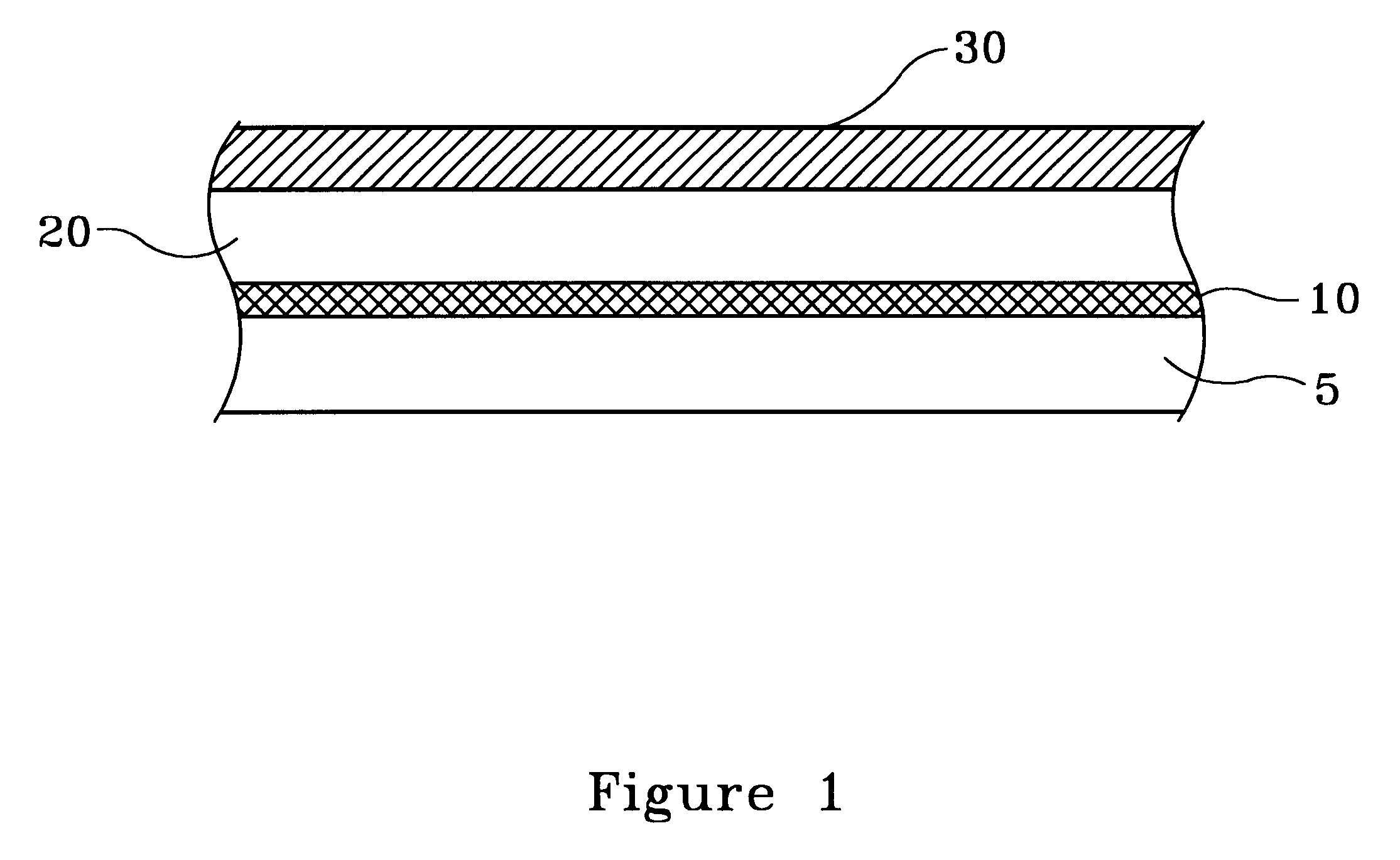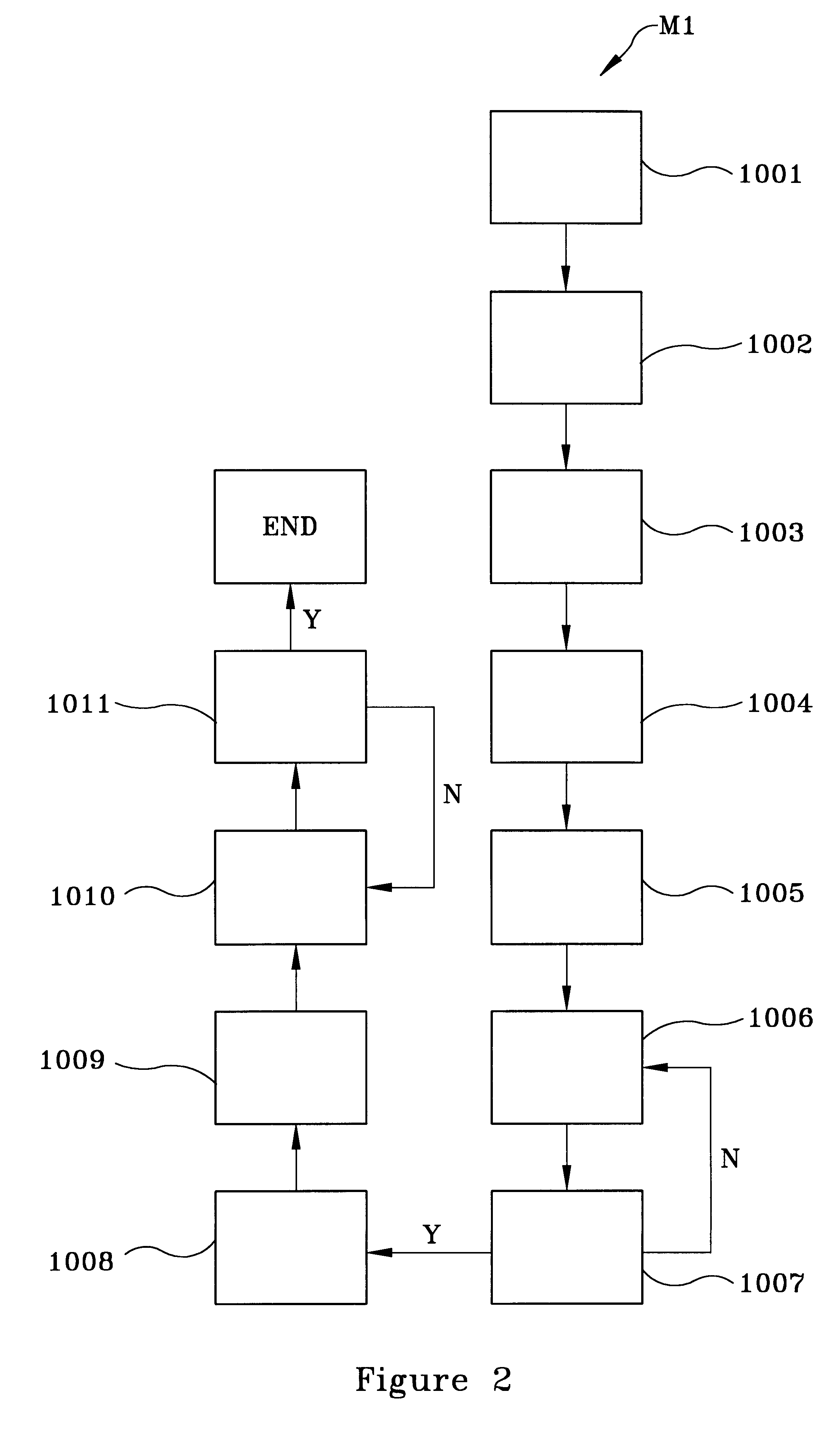Method of electroplating a copper-zinc alloy thin film on a copper surface using a chemical solution
a technology of copper-zinc alloy and chemical solution, which is applied in the direction of electrolysis process, semiconductor devices, electrolysis components, etc., can solve the problems of not providing a cost-effective method of forming a copper-zinc alloy on a cu interconnect surface, and less desirable as a candidate for these higher density devices, etc., to achieve enhanced filling capability, reduce the resistance of the formed cu-zn alloy, and improve the effect of filling
- Summary
- Abstract
- Description
- Claims
- Application Information
AI Technical Summary
Benefits of technology
Problems solved by technology
Method used
Image
Examples
Embodiment Construction
FIG. 1 illustrates, by example only, and in cross-section, a Cu surface 20 having been deposited with a Cu--Zn alloy thin film 30, in accordance with the present invention.
FIG. 2 flowcharts, by example only, a method M1 of synthesizing a liter of a unique nontoxic aqueous Cu--Zn electroplating (chemical) solution, in accordance with the present invention:
(1) cleaning a mixing vessel (e.g., a beaker) with dilute nitric acid (HNO.sub.3) for approximately 5 minutes, as indicated by block 1001;
(2) rinsing the mixing vessel in deionized (DI) water for approximately 5 minutes to approximately 10 minutes and subsequently drying the mixing vessel, for instance, under a gaseous nitrogen (GN.sub.2) flow, as indicated by block 1002;
(3) adding an initial volume of DI water (e.g., approximately 400 ml) to the mixing vessel, as indicated by block 1003;
(4) adding at least one Cu ion source for providing a plurality of Cu ions and stirring the at least one Cu ion source into the DI water for a dura...
PUM
| Property | Measurement | Unit |
|---|---|---|
| Current | aaaaa | aaaaa |
| Current | aaaaa | aaaaa |
| Electric potential / voltage | aaaaa | aaaaa |
Abstract
Description
Claims
Application Information
 Login to View More
Login to View More - R&D
- Intellectual Property
- Life Sciences
- Materials
- Tech Scout
- Unparalleled Data Quality
- Higher Quality Content
- 60% Fewer Hallucinations
Browse by: Latest US Patents, China's latest patents, Technical Efficacy Thesaurus, Application Domain, Technology Topic, Popular Technical Reports.
© 2025 PatSnap. All rights reserved.Legal|Privacy policy|Modern Slavery Act Transparency Statement|Sitemap|About US| Contact US: help@patsnap.com



